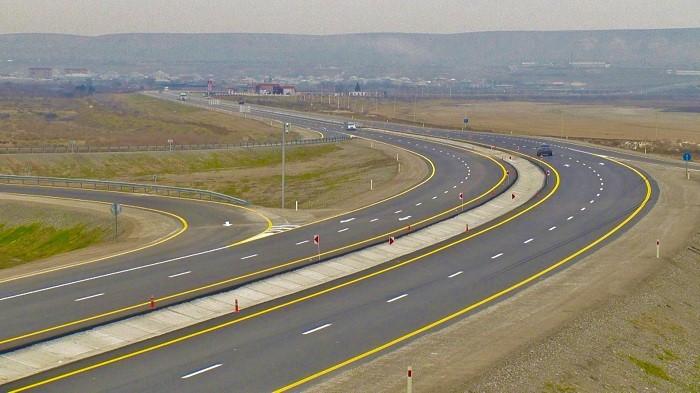BAKU, Azerbaijan, August 13. The Aghdam-Khankendi railway was built on the initiative and under the leadership of National Leader Heydar Aliyev in 1979. Heydar Aliyev, who always paid great attention to the development of Nagorno-Karabakh, attached special importance to the construction of railway lines in the Karabakh region. As a result of the opening of the Baku-Yevlakh-Khankendi railway, the socioeconomic and cultural development of Karabakh was accelerated and its relations with Baku were strengthened. In addition to improving the material and technical supply of the population, it also enabled a significant increase in the economic indicators of the region. For example, the cost of products manufactured in Karabakh significantly dropped due to the decreasing cost of raw materials and transportation of products. All this was achieved precisely as a result of the efforts of the National Leader.
The following is a Trend statistical summary of the importance of communication lines from Aghdam to Khankendi and their prospects for the region.
In the 1980s, the turnover of freight transportation on the Barda-Aghdam stretch of the Yevlakh-Khankendi railway line was 1.5 million tons, while that of the Aghdam-Khankendi (27 kilometers) section was 1 million tons. At the time, the train speed on the Barda-Aghdam stretch was 60 km/h and on the Aghdam-Khankendi stretch 40 km/h.
Let's take a look at the statistical and projected data for the Barda-Aghdam-Khankendi railway line in the table below.
|
No |
Railway line |
Railway axis length |
Train speed prior to occupation |
Projected post-war train speed |
Annual turnover of freight transportation before occupation (1985-1988) |
Projected annual freight transportation |
|
1 |
Barda-Aghdam |
47.1 km |
60 km/h |
80 km/h |
1.5 million tons |
1.5 million tons |
|
2 |
Aghdam-Khankendi |
27 km |
40 km/h |
80 km/h |
1 million tons |

As was the case with other sectors of the economy, the country’s railway suffered tremendous damage as a result of the Armenian occupation of 20 percent of the territory of Azerbaijan in the early 1990s. A major part of Azerbaijan’s railways was occupied together with equipment, the operation of the Yevlakh-Khankendi railway was stopped, the Aghdam, Askeran and Khankendi stations of this line were occupied, and railway tracks were brutally destroyed by the Armenians.
After 30 years, under the leadership of victorious Supreme Commander-in-Chief Ilham Aliyev, life is reviving in our liberated lands again and the construction of new railway lines is picking up in this region.
By a decree of the President of the Republic of Azerbaijan dated November 24, 2020, the design and construction of the Barda-Aghdam railway line has been started. Currently, 90 percent of the design work has been completed, while the progress of construction and installation work is at 70 percent. This includes the installation of 56,951 kilometers of long gauge rails. The first phase of earthworks, the construction of engineering facilities, as well as the installation of road superstructure elements and switchgears, have been fully completed. The design and construction of the Barda-Aghdam railway are scheduled for completion by the end of this year.
The following is information about the project's technical indicators and scope of work:
- The length of the line, including side roads, is 57,857 kilometers, including the axis length of 47.1 kilometers;
- The volume of earthworks is 1,368,816 cubic meters;
- Stations (four): Barda, Kocharli, Tazakand and Aghdam;
- Number of engineering facilities is 130;
∙ This includes three bridges, one overpass, seven animal crossings, 85 culverts, one pedestrian overpass and 33 emergency crossings;
- The project has a total of 16 intersections with highways, including nine protected and seven unprotected ones;
- Number of mobile facilities is 34;
- Length of communication and signaling systems is 47.1 kilometers;
The projected speed of trains is 80 kilometers per hour, the annual turnover of cargo transportation is 1.5 million tons.

How can goods be delivered to Karabakh faster and more efficiently?
In the past, communication lines passing through Aghdam, including the motorway and railway, provided for the needs of residents of Khankendi, Shusha and Lachin. The shortest route from Baku to Khankendi, Shusha, and Lachin passed specifically through Aghdam. The Baku-Yevlakh-Aghdam-Khankendi-Shusha-Lachin highway was more convenient. This road can enable faster and more efficient delivery of humanitarian goods.
In the 1980s, the national R-28 Yevlax-Khojaly-Lachin highway was used to go from Baku to the cities of Khankendi and Shusha through the center of the city of Aghdam. In those years, a 17.5-kilometer two-lane Agdham circular road was built to the administrative territory of Askeran district. The road deviated from KP 40 of the Agdam-Barda highway without entering the center of Aghdam. Until the occupation of Azerbaijani lands by Armenia, the entire population of Karabakh, as well as Lachin district, used this road on a permanent basis.
The distance from Aghdam city to Askeran district is 6 kilometers, to Khankendi city 23 kilometers, and from Khankendi to Shusha 11 kilometers. The distance from Baku to Aghdam is 360 kilometers, to Khankendi 383 kilometers, to Shusha 394 kilometers, and to Lachin 435 kilometers.
In accordance with the infrastructure restoration project in liberated territories, the construction of the 44.5-kilometer Barda-Aghdam and 65.7-kilometer Aghdam-Fuzuli first degree four-lane highways is powering ahead. Both highways have a daily throughput capacity of 17,000 vehicles.
Before the conflict, the Baku-Yevlakh-Aghdam-Khankendi-Shusha-Lachin highway and the Baku-Aghdam-Khankendi railway played an important part in the development of Karabakh. Although the railway line was destroyed during the occupation, it is still possible to travel by road. For this reason, all Armenians excuses are completely irrelevant. The economic potential of present-day Azerbaijan is sufficient to address the social issues of its Armenian residents of Karabakh. Since this region is the territory of Azerbaijan, all communications should be carried out through the territory of the country. There are currently three airports operating in and around the Karabakh economic region – Ganja, Yevlakh and Fuzuli. This creates a basis for the region to become a hub for transport and logistics projects. Since the distance from these airports to the city of Barda is close, the transportation of goods from there via the Barda-Aghdam road and the Barda-Aghdam railway can prevent loss of time. From this point of view, the Aghdam-Khankendi road is of great importance.
The Azerbaijani side has allowed the use of the Aghdam-Khankendi road to meet the needs of Armenian residents. The state of Azerbaijan is determined to reintegrate the ethnic Armenian residents of Karabakh, as citizens having equal rights, into its political, legal, economic and social system. Therefore, Armenia must strictly comply with its obligations not to interfere in the internal affairs of states, not harm the integration of persons belonging to ethnic minorities, and not incite separatism in the territory of neighboring states.






